Why a 2025 Fee Increase is Needed
The State Bar of California is seeking a large fee increase in 2025, and we want you to know why.
Why the State Bar Matters
The State Bar has a broad mandate to license, regulate, and discipline attorneys, advance the ethical and competent practice of law, and increase access to and inclusion in the profession. A financially sound State Bar is important for the public and the profession alike.
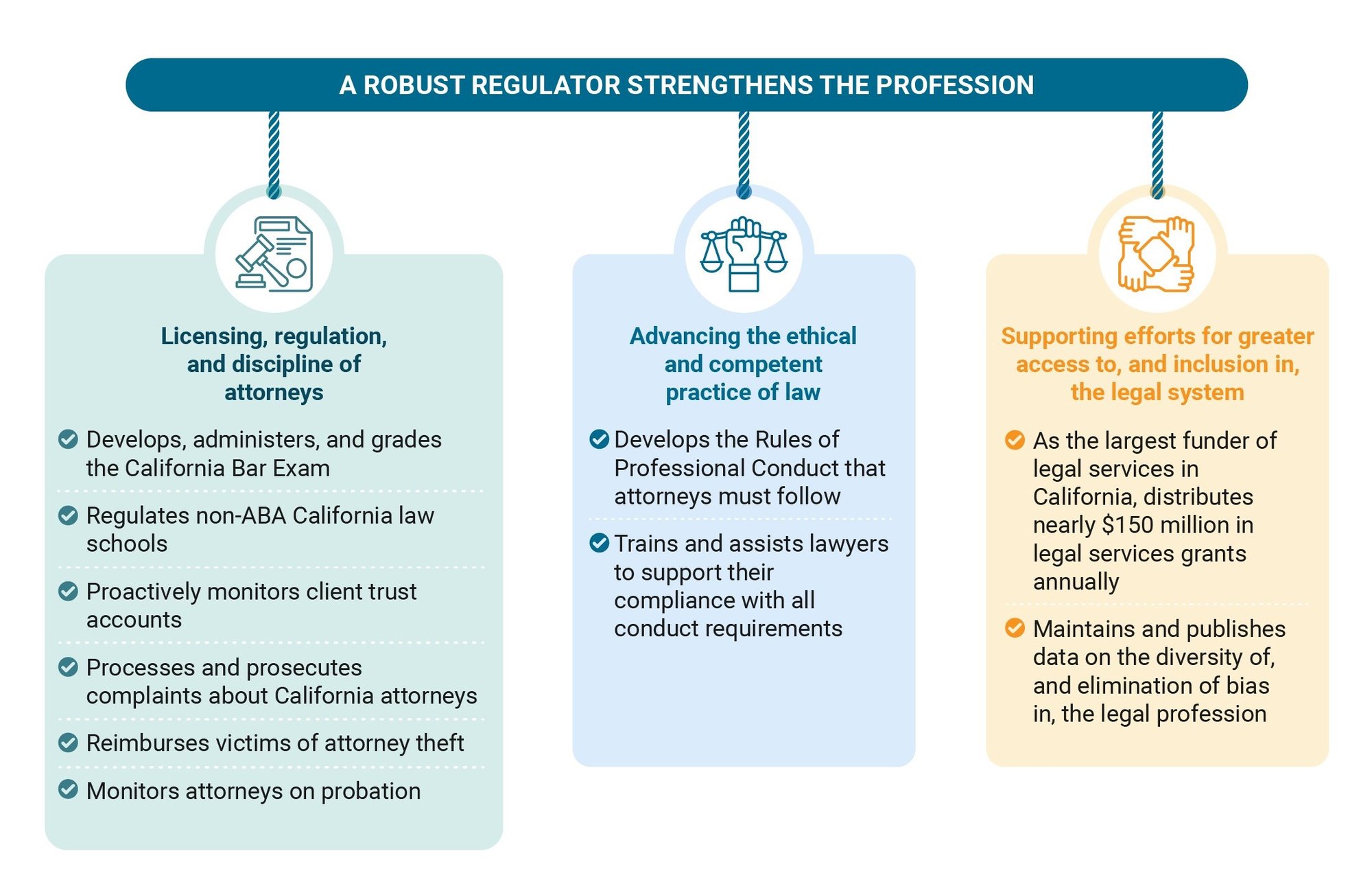
The State Bar Needs a 2025 Licensing Fee Increase
Here are the elements of the $125 fee increase request and what they would fund.
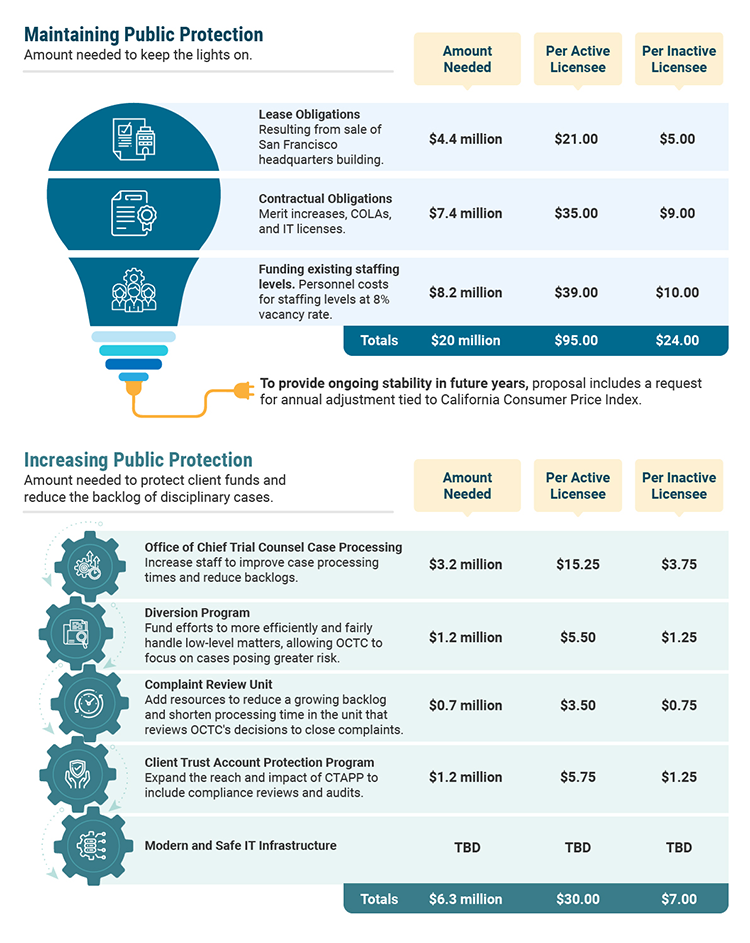
Why Do We Need Such a Large Fee Increase?
-
1. Licensing fees have not kept up with the pace of inflation.
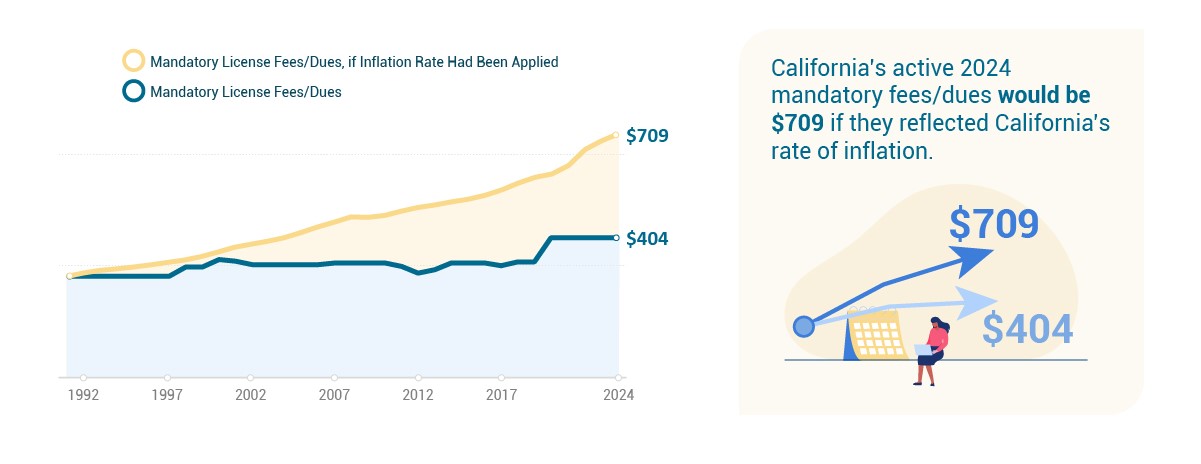
Note: Fees/dues reflect those applicable for active attorneys. The following categories of fees were used to determine mandatory licensing fees/dues for each state: dues, licensing/registration fee, discipline fee, professional responsibility fee, occupational tax, and mandatory continuing legal education (CLE) fee. California’s amount of $404 reflects a $379 attorney license fee and a $25 discipline fee. The $379 attorney license fee is calculated as follows: the $395 fee mandated by California Business and Professions Code section 6140, minus portions of the fee that are not slated for the State Bar’s Unrestricted General Fund or are limited term in nature (a $4 limited-term capital assessment fee, a $5 limited-term information technology assessment fee, a $5 lobbying fee, and a $2 opt-out fee).
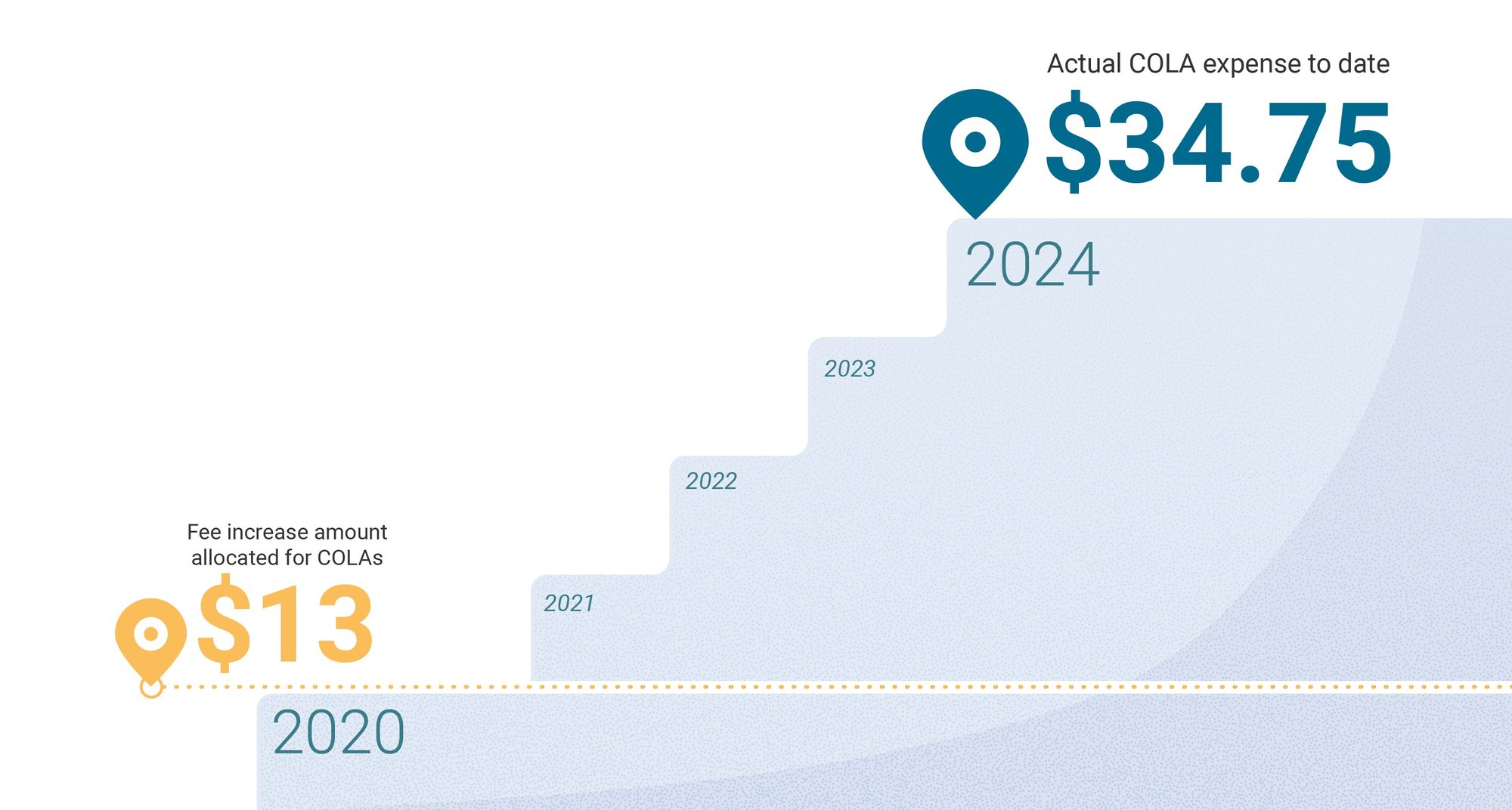
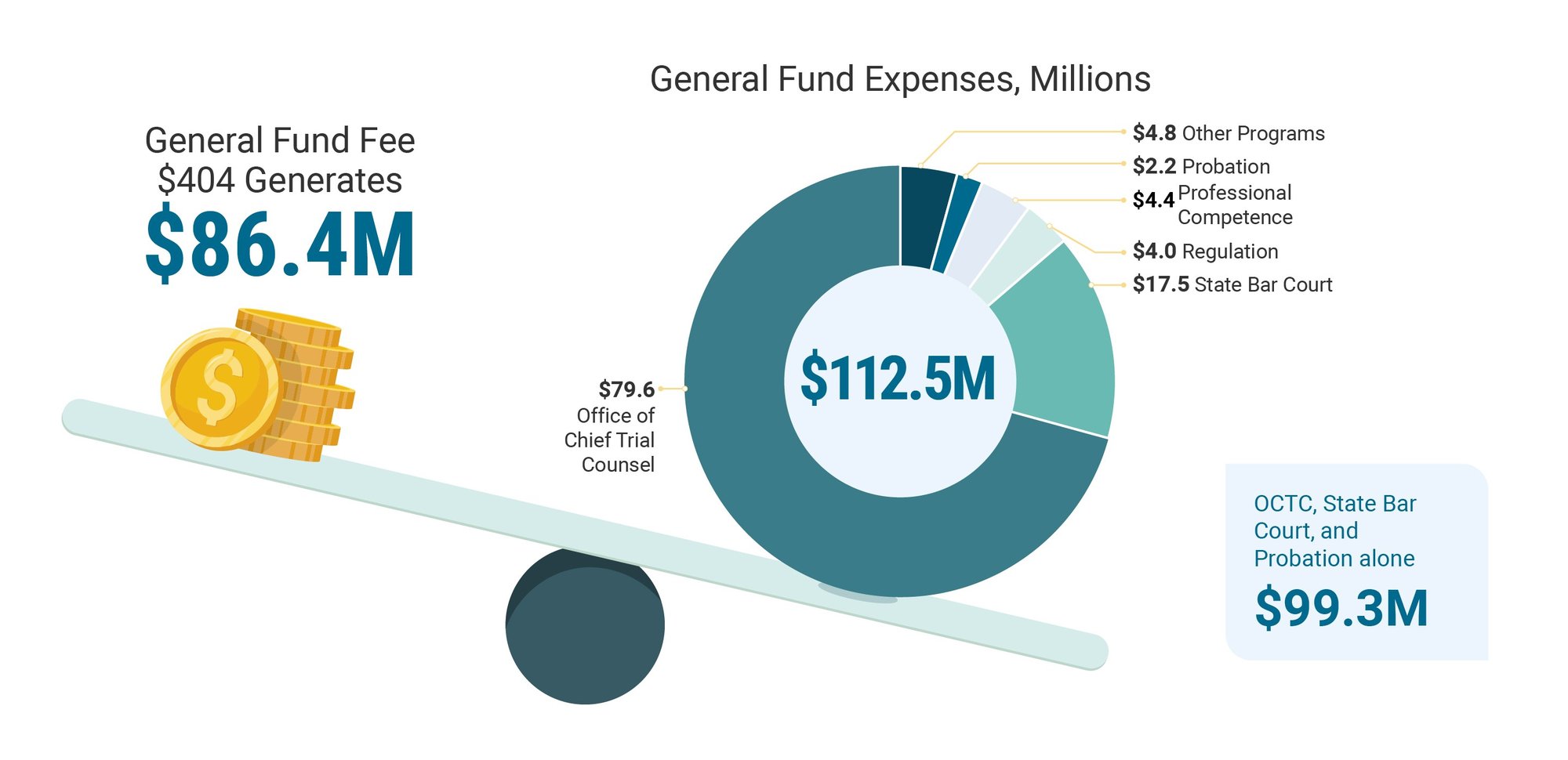
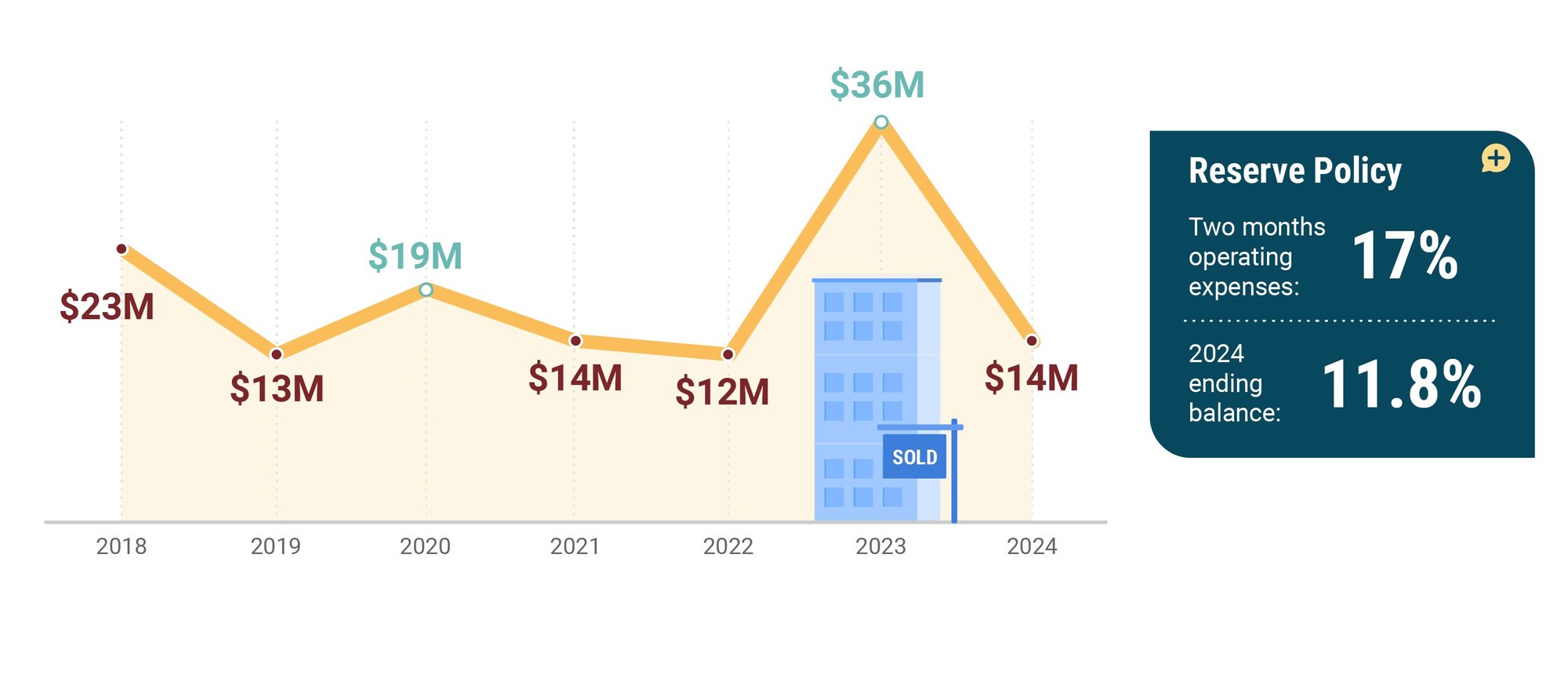
How Does the State Bar Stack Up Against Other Attorney and Medical Licensing Agencies?
1. California has the highest cost of living of any state and is the only state bar with a dedicated disciplinary court. Even with the fee increase, our fees would be lower than several other states.
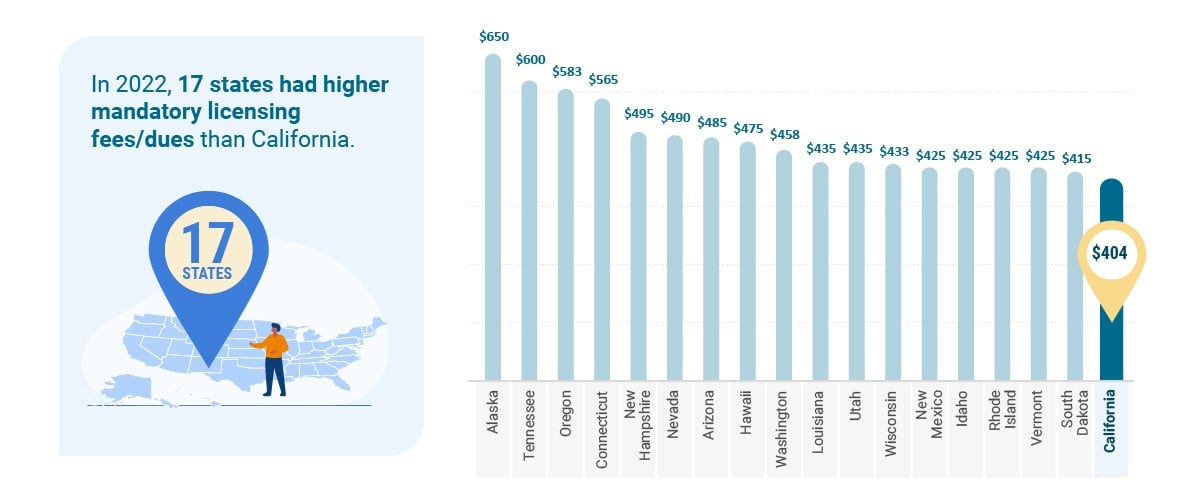
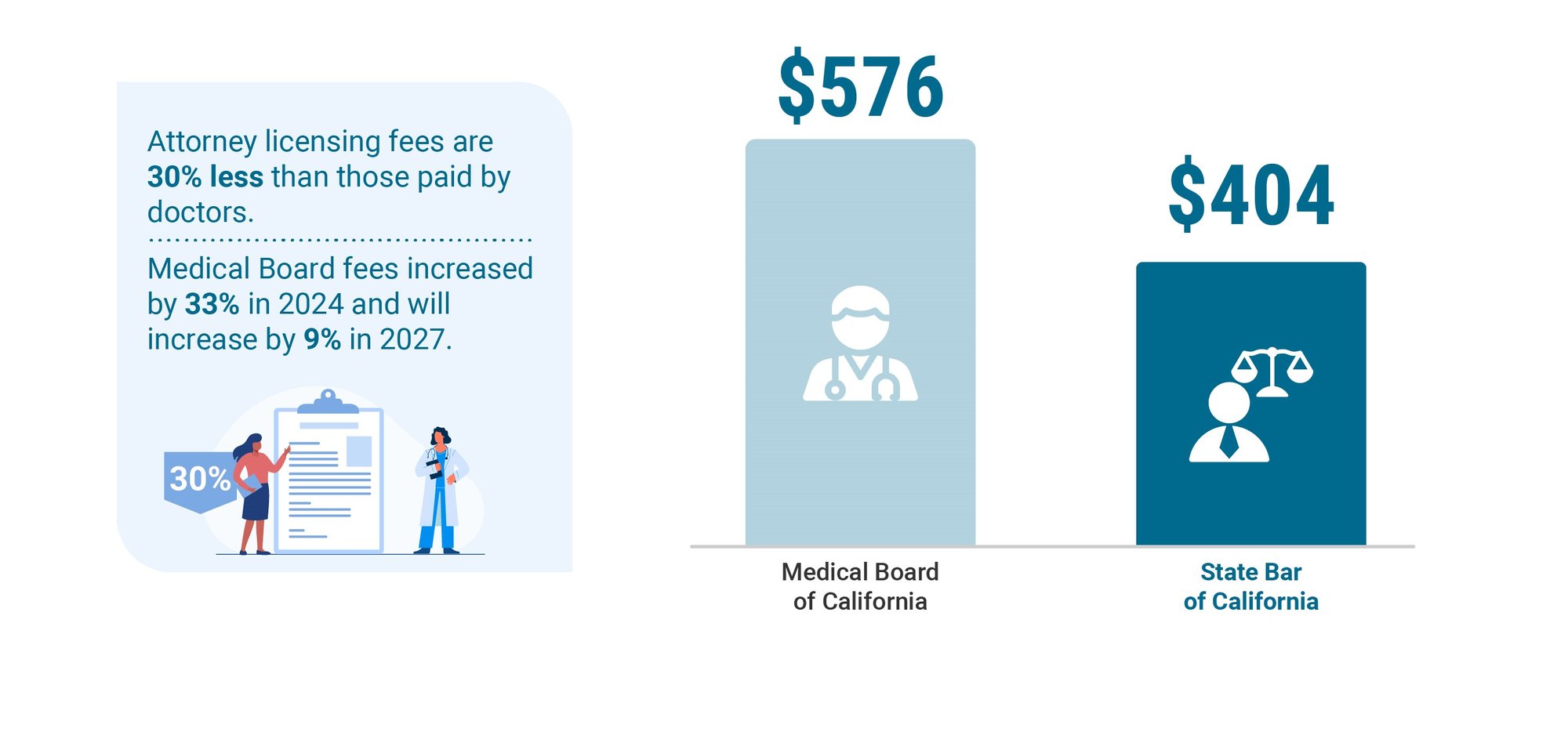

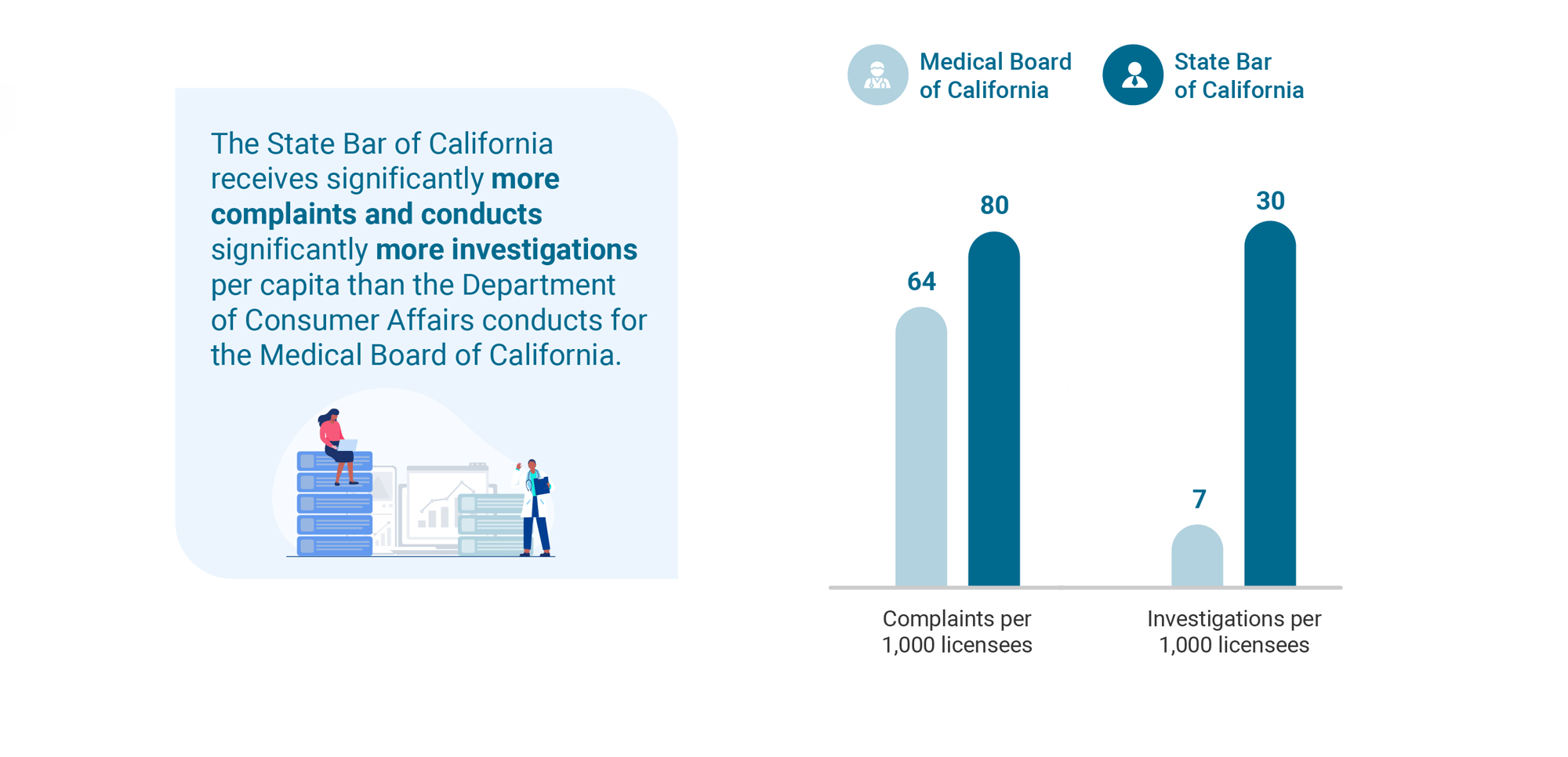
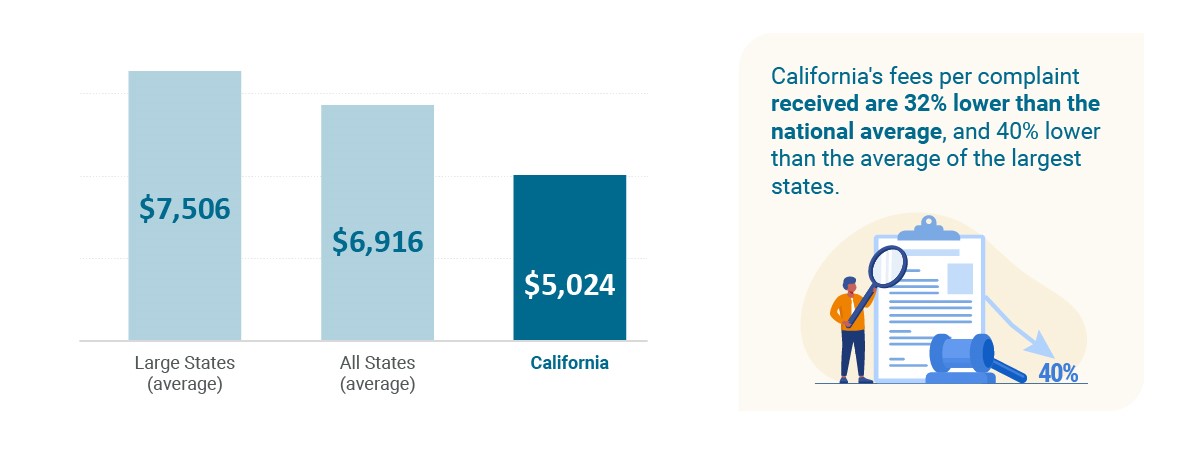
Graphic was updated on March 20, 2024. Sources: ABA 2021 Survey on Lawyer Discipline (SOLD) Systems and 2022 State and Local Bar Benchmarks Survey: Membership
Large States: This includes 15 states with highest number of licensed active attorneys, including California. Calculation: Total fees/dues collected (active licensees x licensing fee/dues) divided by the number of complaints. California: ($404 fee x 194,747 active attorneys)/15,659 complaints = $5,024.
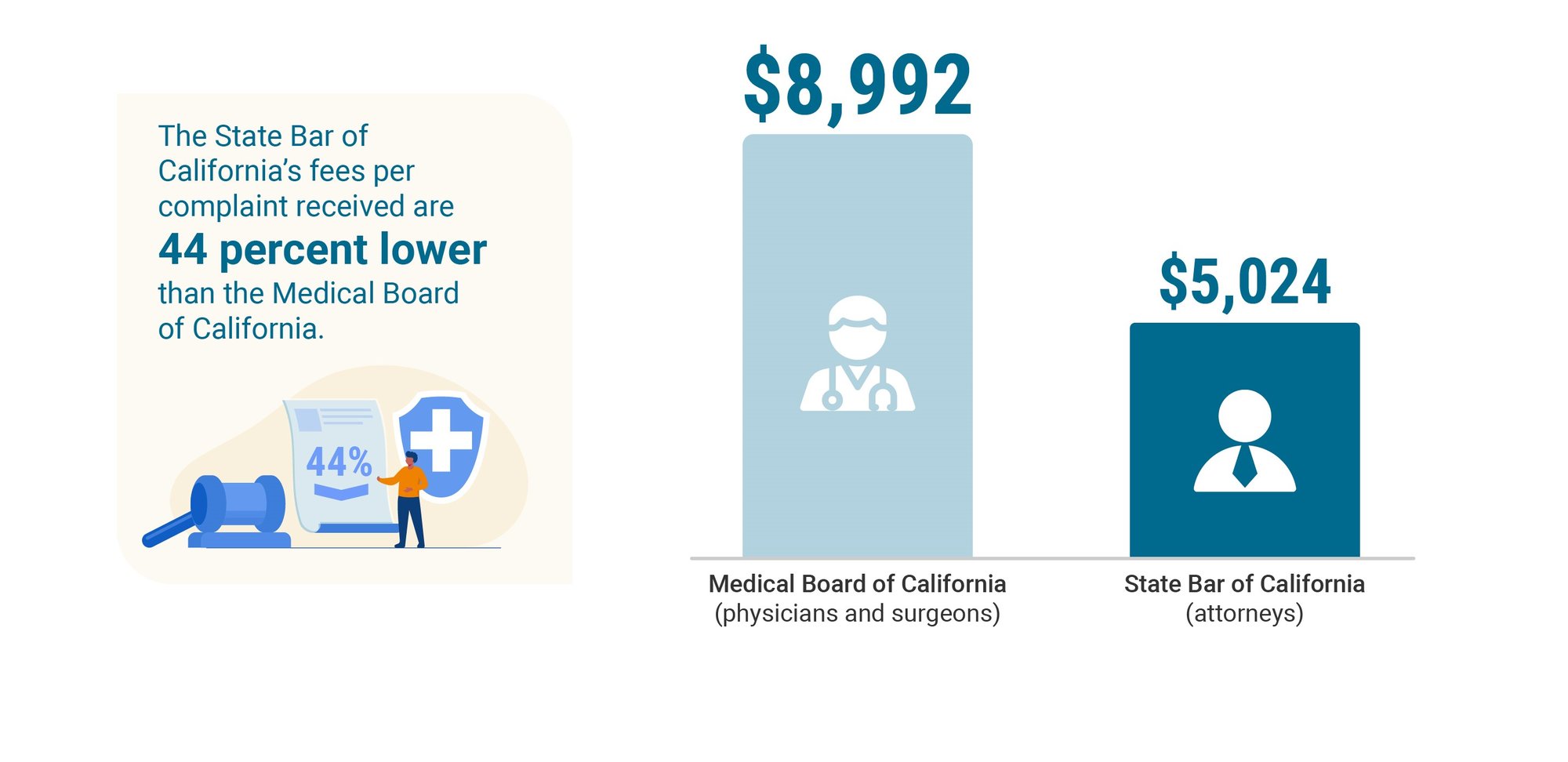
A New Way of Assessing Fees
The proposed fee increase of $125 would be more difficult for some to absorb than others. The State Bar is proposing a new practice-sector-based fee assessment model that would shift costs toward those individuals or entities most able to pay. Other (retirees), solo, and nonprofit attorneys would realize increases between zero and 4 percent over the current base fee of $404.
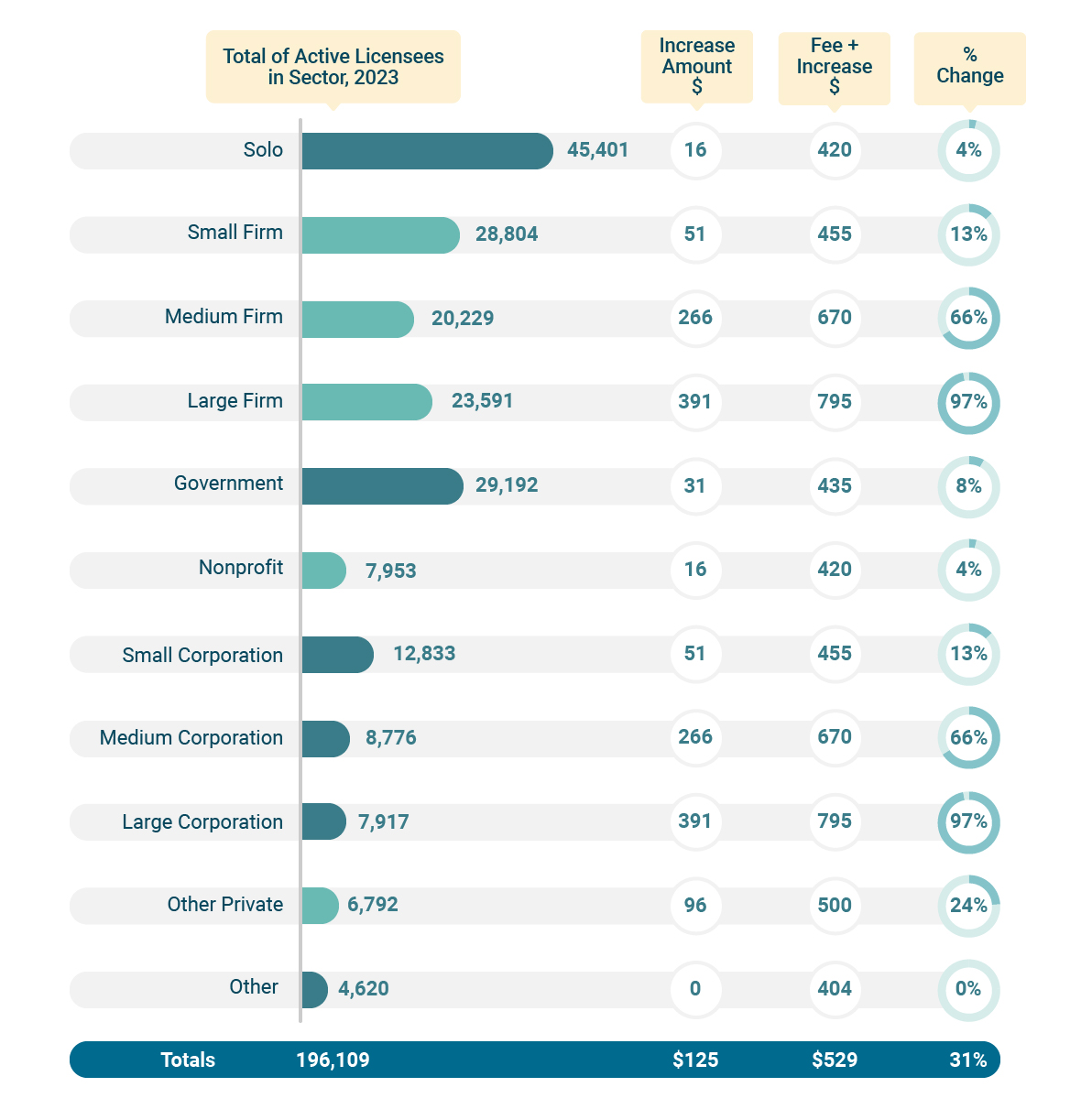
If There's No Fee Increase, What Would Happen?
As noted above, the fee increase request has two components: $95 to maintain public protection and $30 to improve public protection. Absent any investment in improving the State Bar's outcomes, we will continue to fall short of the public’s expectations and be unable to fully implement legislative priorities.
The consequences of failing to fund the portion needed to maintain public protection would be dire, as shown below.
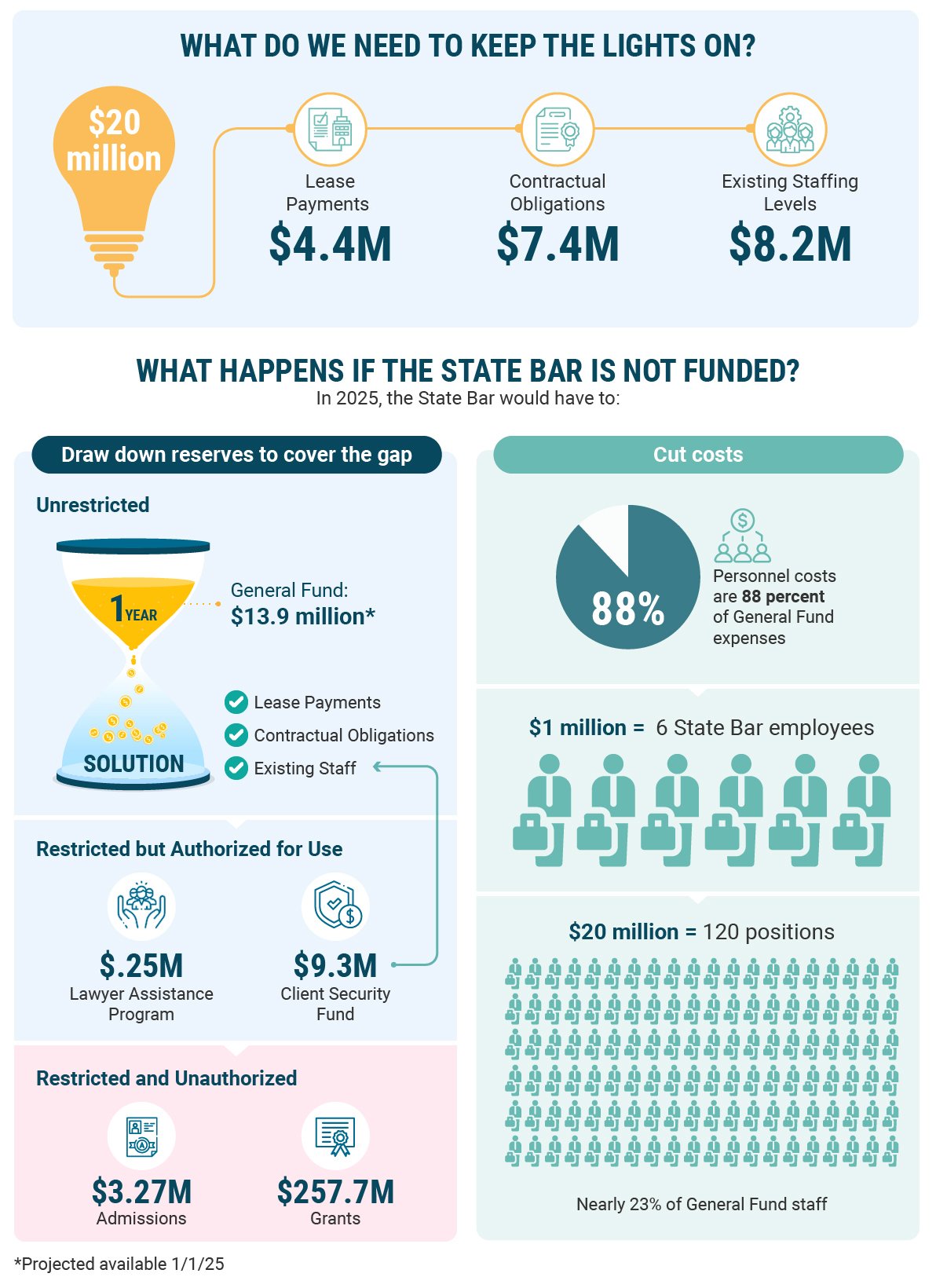
What is Currently Being Proposed by the California Legislature?
The current version of the fee bill for 2025, Assembly Bill 3279, includes an increase that amounts to 70 percent of the State Bar’s stated need.
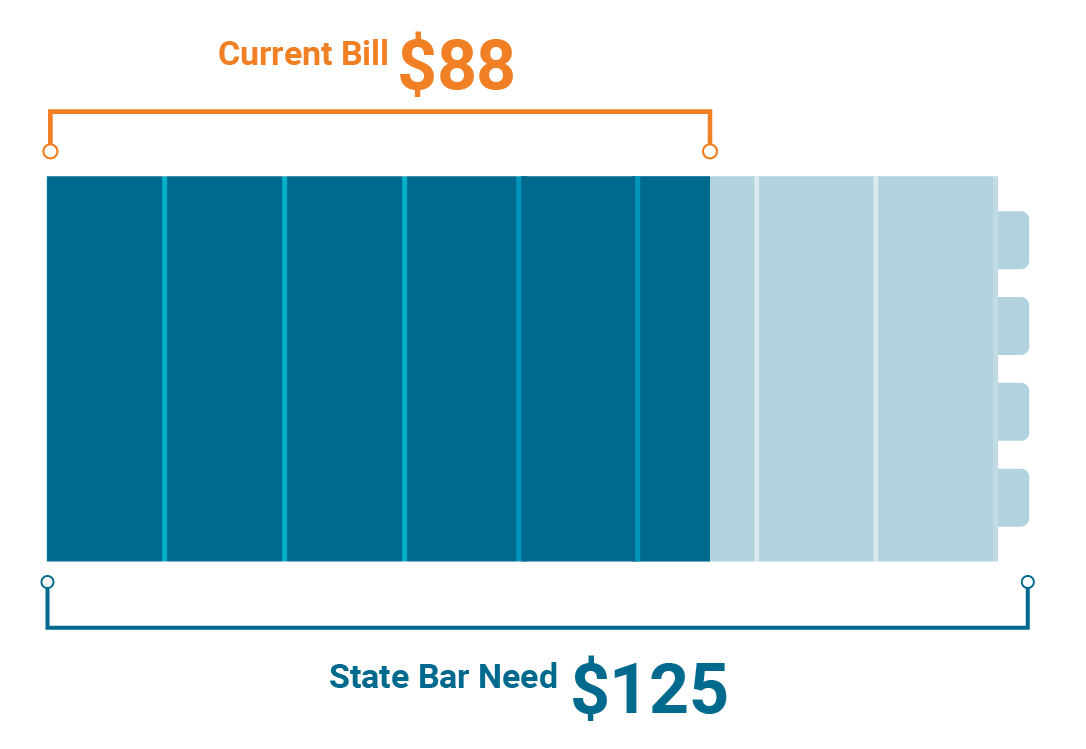
What the bill funds for Maintaining Public Protection is shown below. The current bill requires the State Bar to meet a cost-cutting target of doubling its vacancy rate, to 15 percent, by April 2027.
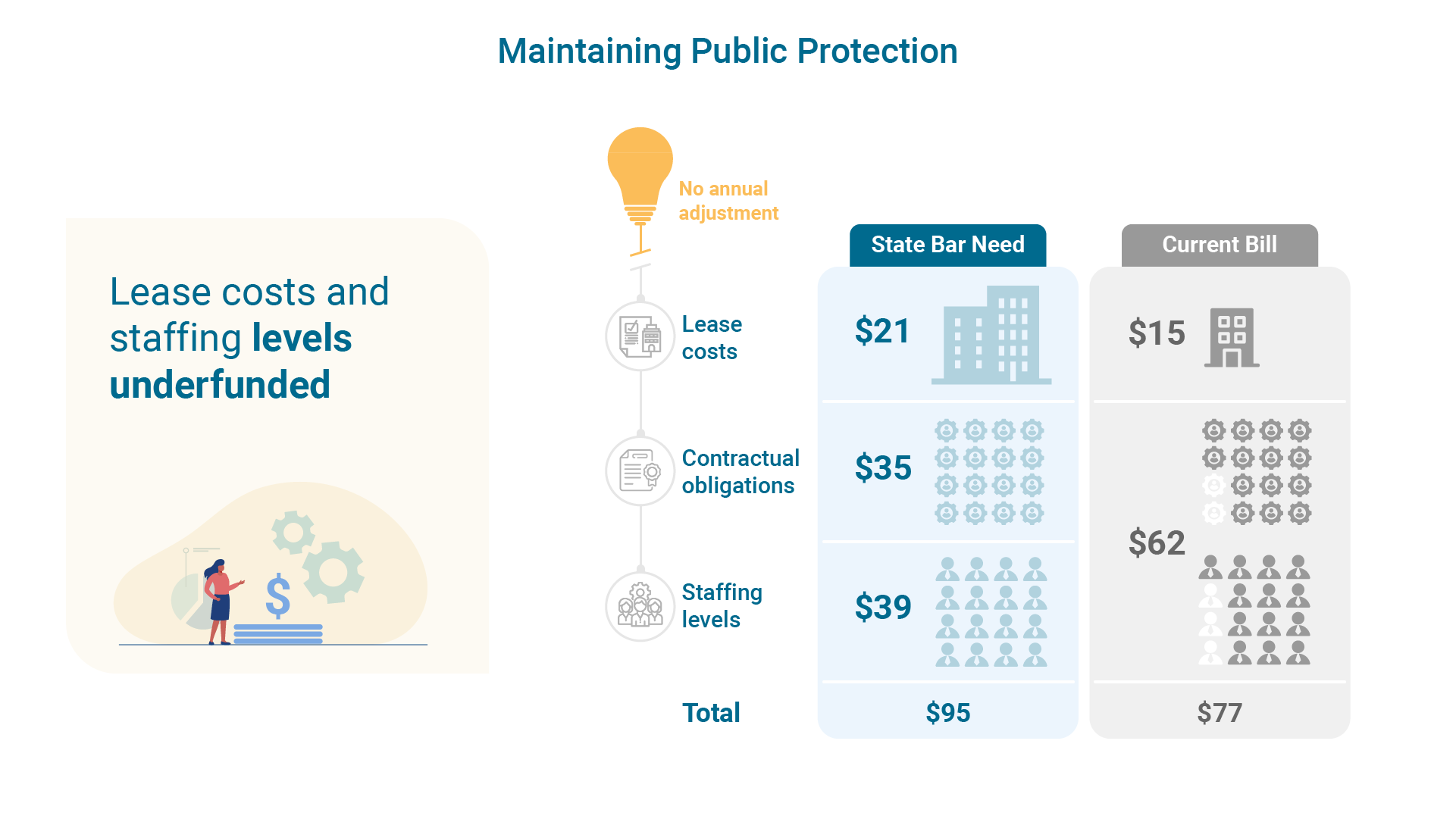
The bill funds two of four programs for Improving Public Protection as shown below. No additional staff would be funded to speed up discipline case processing, so complaint backlogs would continue and grow.
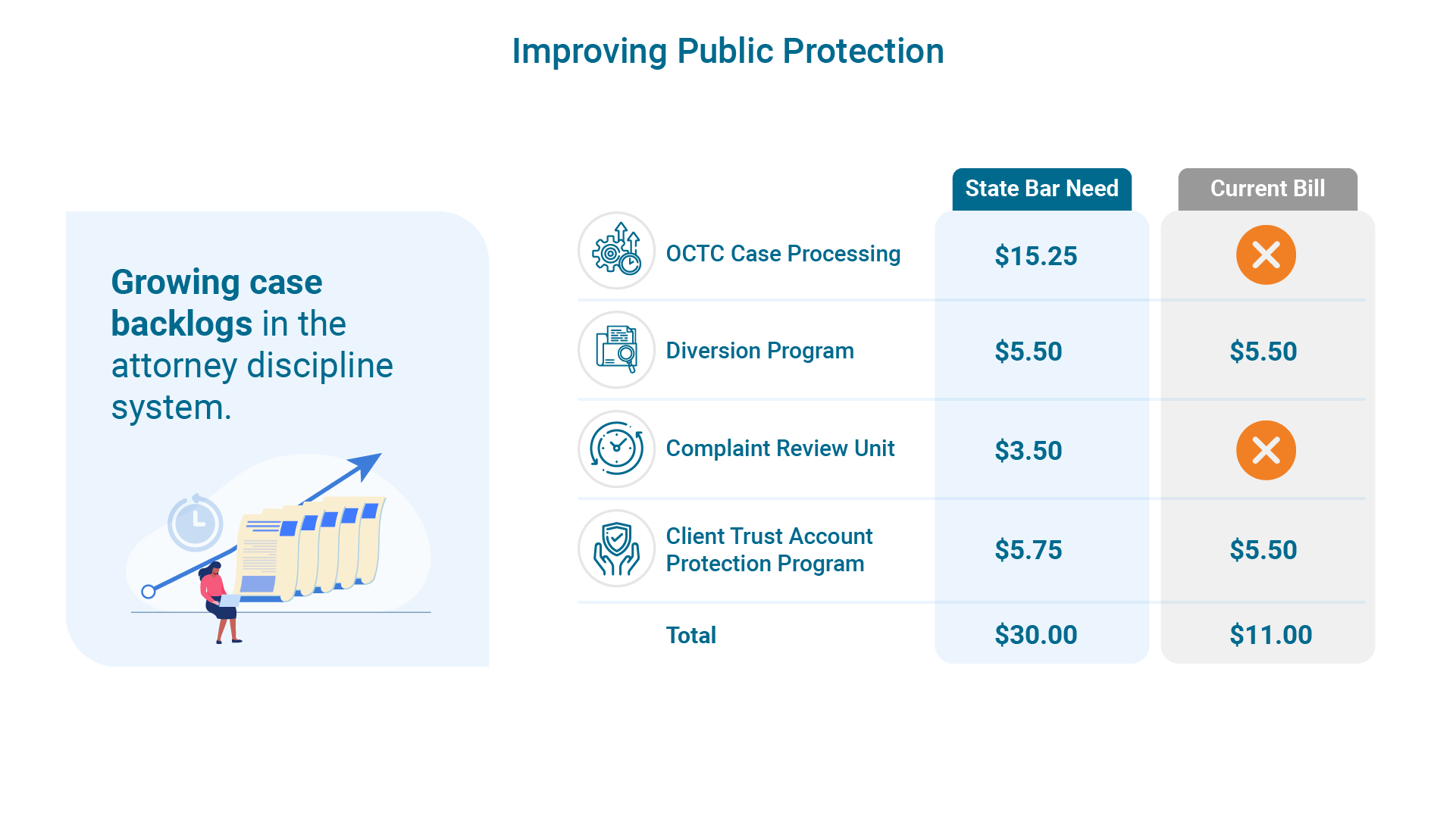
The bill currently includes no provision for fee scaling by practice sector, nor does it provide for annual adjustments for inflation.
What About Investment in Information Technology?
The State Bar is proposing a funding approach for IT investment that would avoid additional licensing fee increases. The proposal, which requires legislative approval, involves drawing on excess reserves in the Client Security Fund; part repayment of past fund transfers and part loan to be repaid over 15 years, to enable the State Bar to make critical IT investments to enhance security, efficiency, and service as it enters a future with fewer staff. Learn more.
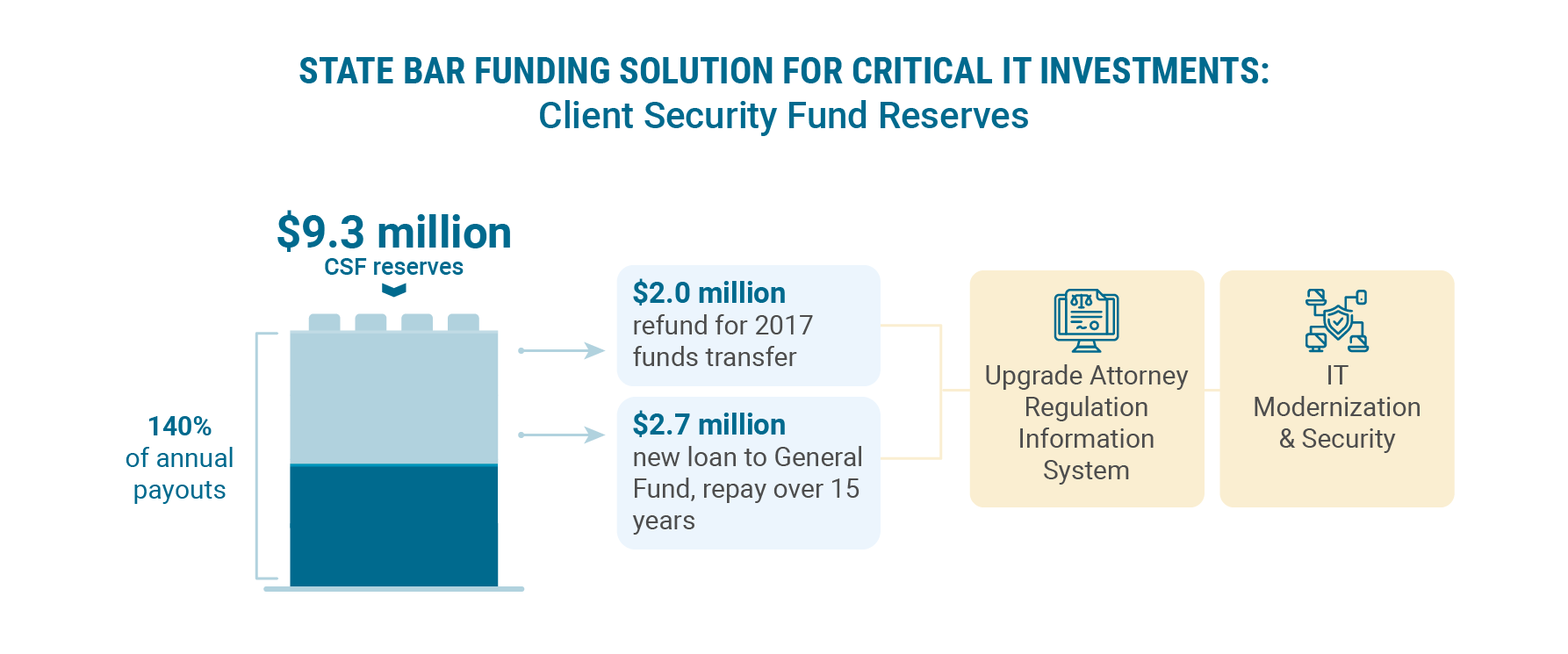
The State Bar of California’s mission is to protect the public and includes the primary functions of licensing, regulation and discipline of attorneys; the advancement of the ethical and competent practice of law; and support of efforts for greater access to, and inclusion in, the legal system.
Feedback? Questions? Please contact communications@calbar.ca.gov.